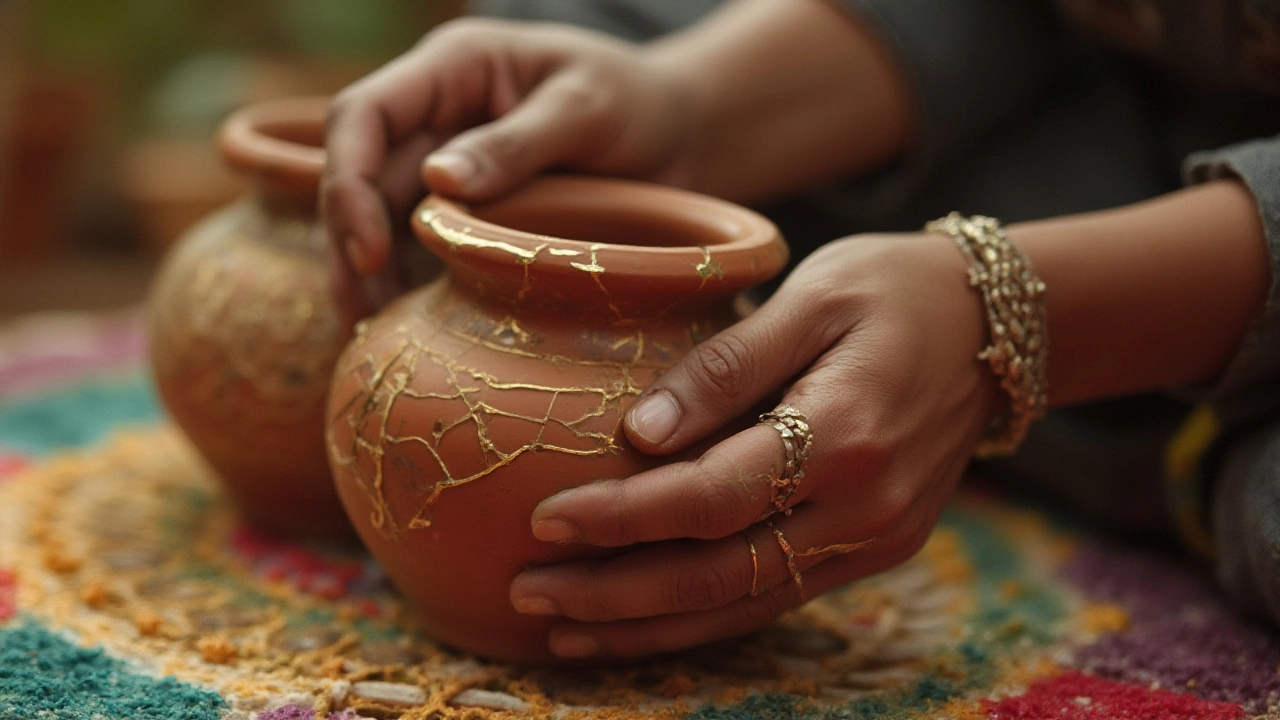Beautifully Broken Quote Meaning, Origins & Powerful Life Lessons
 Jul, 17 2025
Jul, 17 2025
Smash a coffee mug on the floor and try to glue it back. No matter how careful you are, the cracks will always show. But sometimes, those cracks give the cup a story. They’re proof it’s survived. That’s the energy behind ‘beautifully broken’—a phrase tossing around Instagram, t-shirts, and even tattoo shops ever since it caught fire in the last decade. Some people see ‘broken’ as defeat. But what if broken means battle-tested? What if it whispers about resilience and beauty that’s raw, honest, and anything but perfect?
Tracing the Roots of ‘Beautifully Broken’
The phrase ‘beautifully broken’ isn’t exactly Shakespeare, but man, it lands hard. So where did it actually come from? While it shows up in recent years as both a book title and the name of a faith-based drama film released in 2018, the idea is way older. Psychology circles have long explored the idea of growth from pain, but the exact two-word phrase gets its kickstart in pop culture. One big spark comes from the 2015 hit song ‘Beautifully Broken’ by Plumb, known for its raw lyrics about pain and healing. The phrase suddenly popped up all across Pinterest boards and Instagram captions as a shorthand for surviving the messier sides of life and still shining brightly.
Think of Japan’s kintsugi pottery—where cracks are filled with gold, making breaks more beautiful than before. That’s almost a parallel concept to ‘beautifully broken.’ You fall, you learn, your scars become stripes. Some might say Ernest Hemingway’s line, “The world breaks everyone and afterward many are strong at the broken places,” laid the philosophical groundwork for this catchphrase. Modern memes and quote graphics just gave it a sharper outfit and sent it viral.
While nobody can pinpoint one person who coined this quote, it’s now woven into stories, music, and even mental health conversations worldwide. On Google Trends, searches for ‘beautifully broken’ spiked after 2016 and again each year during Mental Health Awareness Month, signaling how much people relate to its core message.
What Does the Quote Really Mean?
People hear ‘broken’ and tense up. Nobody posts their worst days on their highlight reels. But when you call something ‘beautifully broken,’ you smash the stigma around flaws. You say, yes, I am hurt, but also honest, brave, and human. In therapy rooms, that idea often helps people embrace their full stories instead of wishing for a past that’s erased or airbrushed. Psychotherapist Lori Gottlieb once said, “We’re all walking stories of brokenness, doing our best to shine anyway.”
Here’s the twist: ‘Beautifully broken’ celebrates acceptance and growth over fake perfection. Think about it—you don’t toss out a vintage jacket just because it has a little tear. It has character. Same goes for people. The phrase helps those wrestling with shame, failure, or just hard knocks reframe their scars as badges of survival. Whether you’re coming out of heartbreak, addiction, depression, or loss, the wisdom hiding behind these two words is clear: what’s broken can become artful, even stronger, and more relatable. People connect with this idea because it makes space for all the mess and magic of being real.
In day-to-day life, adopting this mindset means you don’t have to hide pain or pretend to be okay 24/7. According to a 2022 survey from the American Psychological Association—which links self-acceptance to greater happiness and relationship satisfaction—the more you lean into what makes you ‘different,’ the more likely you are to find people who accept your truths. The phrase can feel especially powerful for those who don’t tick all the ‘normal’ boxes, whether due to physical scars, mental health struggles, or just feeling like an outsider now and then.

How ‘Beautifully Broken’ Inspires Real Change
The quote isn’t just a pretty phrase for wall art. It helps mold real-life mindsets. Read any memoir with grit—think Elizabeth Gilbert’s ‘Eat, Pray, Love’ or Cheryl Strayed’s ‘Wild’—and you’ll find this theme at the core: you don’t just survive by patching up. You grow in the process. When people buy ‘beautifully broken’ necklaces or set it as their wallpaper, they’re staking a claim: this is who I am, cracks and all, and that’s enough.
Researchers at Harvard have found that positive self-talk—especially when we accept our real stories, not just successes—can reduce anxiety and improve focus. That fits right into why this phrase resonates with so many. It’s also become a rallying cry in support groups, especially for mental health and addiction recovery. During the COVID-19 pandemic, therapists across the US noticed an uptick in patients using the phrase in journals and group sessions, linking it to spikes in hope and motivation amid uncertainty.
Want to put this philosophy into play? Avoid hiding your failures. Try these tips:
- Write down the challenges you’ve faced and what you learned. See if scars—physical or emotional—have led to unique strengths.
- Look for people who share their own ‘broken’ stories. Vulnerability is contagious and helps kill shame.
- Use creative outlets (music, art, writing) to document your growth. A poem about heartbreak or a painting about anxiety isn’t weakness—it's testimony.
- If you know someone struggling, remind them that broken doesn’t mean worthless. Sometimes people need the words out loud.
In one study by the University of Pennsylvania in 2023, participants who started embracing their ‘broken’ sides felt braver about tackling new challenges and less likely to compare themselves to others on social media. It’s proof that a mind shift, sparked by something as simple as a quote, can ripple into daily life in big ways.
Common Misunderstandings and the Real Power Behind the Words
Some folks get uneasy around the word ‘broken.’ They hear it as a label for being unfixable. But the ‘beautifully’ flips that. It isn’t about staying stuck in struggle or glorifying suffering. Instead, it shines a light on what happens after tough stuff, when you stitch life back together with wisdom you didn’t have before. It is about honoring the battle scars: recognizing both the pain and the beauty in survival. This can play out in big ways, from how you treat yourself in the mirror, to how you parent your kids, to the friends you choose.
- Myth: ‘Beautifully broken’ means you don’t want to heal. (Reality: The phrase is about the journey, not the destination.)
- Myth: Only people with major trauma relate to this quote. (Reality: Everyone has cracked edges, big or small—and the wisdom applies at every stage.)
- Myth: It encourages people to dwell in their pain. (Reality: It invites people to learn from, grow through, and share their experiences.)
Data from a 2024 meta-analysis by the World Health Organization shows that global mental health support groups mentioning the phrase ‘beautifully broken’ had a 19% higher rate of participant retention compared to groups using more clinical language only. This suggests that embracing imperfection helps people stick with healing. Words matter. When language is gentle and honest, people show up more fully.
So if you’ve ever heard yourself say, “I’m not enough,” or “I’m too messed up,” maybe write the phrase ‘beautifully broken’ somewhere you’ll see it. Let it remind you that what you’ve been through makes you interesting, not damaged. The world doesn’t really want perfect people anyway—it wants real ones. That’s the message behind the quote, and it’s why it refuses to fade away.
| Year | Google Search Interest | Notable Use |
|---|---|---|
| 2015 | 32 | Plumb's "Beautifully Broken" song release |
| 2016 | 48 | Instagram quote graphics trend |
| 2018 | 67 | "Beautifully Broken" movie release |
| 2020 | 74 | Mental health advocacy during COVID-19 |
| 2023 | 87 | Adoption by therapy communities |
The beautifully broken quote isn’t a magic fix, but it’s a damn good invitation to step out from behind the mask, face your cracks, and remember: you’re not less, you’re human. And sometimes, you’re at your best with the seams showing.